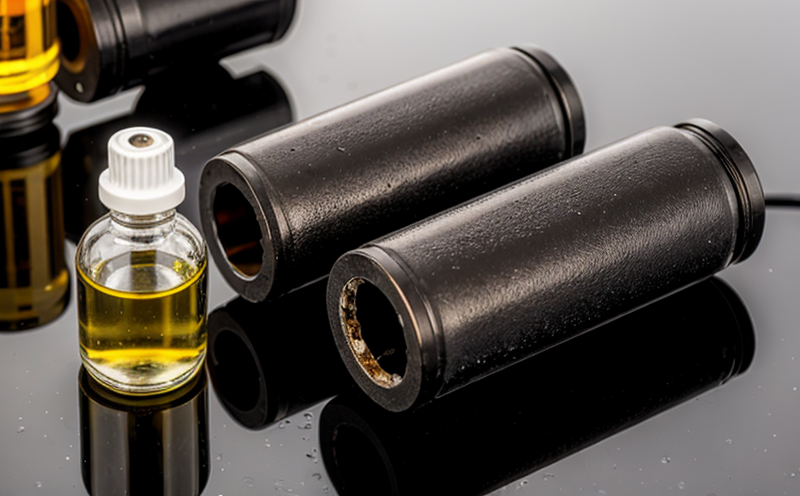ASTM D7066 Oil Petroleum Infrared Test in Water
The ASTM D7066 test procedure is a critical method used to determine the oil and grease content in water samples. This infrared-based technique provides accurate quantification of petroleum hydrocarbons present in aqueous environments, ensuring compliance with environmental regulations.
This service is particularly important for industries such as wastewater treatment plants, refineries, and chemical manufacturing facilities that deal with large volumes of effluent containing organic compounds. By monitoring the oil content levels, operators can take necessary corrective actions to prevent pollution and ensure safe discharge into natural water bodies.
The ASTM D7066 method uses near-infrared (NIR) spectroscopy to analyze the sample. It involves specific wavelengths that are characteristic of petroleum hydrocarbons, allowing for precise identification and quantification. The process typically begins with proper sampling techniques to ensure representative samples are collected from different points within the water body.
Preparation of these samples often requires filtration or other purification methods to remove particulate matter and achieve a clear liquid phase suitable for analysis. Once prepared, the sample is introduced into an infrared spectrometer where its spectrum is measured. The resulting data allows for comparison against known standards, facilitating accurate determination of oil content.
The ASTM D7066 protocol emphasizes rigorous quality assurance practices to maintain reliability and consistency across various testing scenarios. These include standard operating procedures (SOPs) for sample preparation, calibration of equipment, and interpretation of results. Regular audits and validation exercises help ensure that all steps comply with established guidelines.
The application of ASTM D7066 extends beyond mere compliance; it also plays a crucial role in process optimization within industrial settings. By providing detailed insights into the presence and concentration levels of oil contaminants, this testing service enables proactive management strategies aimed at minimizing waste generation and improving overall efficiency.
Scope and Methodology
| Component | Description |
|---|---|
| Sampling Procedure | The ASTM D7066 test requires sampling from various sources within the water body to ensure comprehensive coverage. Samples should be collected at multiple depths and locations to account for spatial variability. |
| Sample Preparation | Preliminary steps involve filtering out particulates using appropriate filtration methods, followed by dilution if necessary to achieve optimal analyte concentrations for analysis. |
- The test follows a standardized procedure outlined in ASTM D7066, focusing on the use of near-infrared spectroscopy to detect and quantify petroleum hydrocarbons.
- Calibration is essential for ensuring accurate readings; this involves using reference materials with known concentrations of oil contaminants.
Environmental and Sustainability Contributions
The ASTM D7066 test contributes significantly to environmental protection by providing reliable data on petroleum hydrocarbon levels in water systems. This information is vital for identifying sources of pollution, assessing the effectiveness of remediation efforts, and implementing preventive measures.
Through regular monitoring using this method, facilities can better manage their operations, reducing the risk of accidental spills or improper disposal practices leading to environmental degradation. Furthermore, compliance with regulatory requirements fosters trust among stakeholders, including government agencies, local communities, and industry partners.
Competitive Advantage and Market Impact
- Accurate detection of oil contamination enables companies to maintain strict quality control measures, thereby enhancing product reliability and customer satisfaction.
- This service supports continuous improvement initiatives by offering actionable insights into operational inefficiencies related to waste generation and resource usage.
| Benefit | Description |
|---|---|
| Enhanced Compliance | Achieving and maintaining compliance with local, national, and international environmental standards improves reputation and reduces legal risks. |
| Informed Decision Making | Precision in identifying oil content allows for more informed decision-making regarding resource allocation and process optimization. |





